#TBT Rolex Daytona 6265 Big Red – A Watch Worth the Hype?
Silence. It’s the sound of the Rolex Daytona 6265 Big Red upon opening the safe deposit box and it’s sadly the noise, or lack thereof, that this highly finished chronograph creates 99% of the time. In the roughly 20 years since giving way to automatic followers, the formerly unwanted manual wind Cosmographs have become icons – valuable icons. In its least expensive form, get ready to cough up somewhere in the range of $35,000 for a correct example. Whether that rates as a lot of money or not depends on your situation, but let’s agree that it’s a significant sum for a watch and for me, it makes for an infrequent wear. On #TBT today, I’ll try to unravel some of the mythos of the Daytona and whether this watch really deserves even some of the unbelievable, bordering on ridiculous, admiration that it has gained.
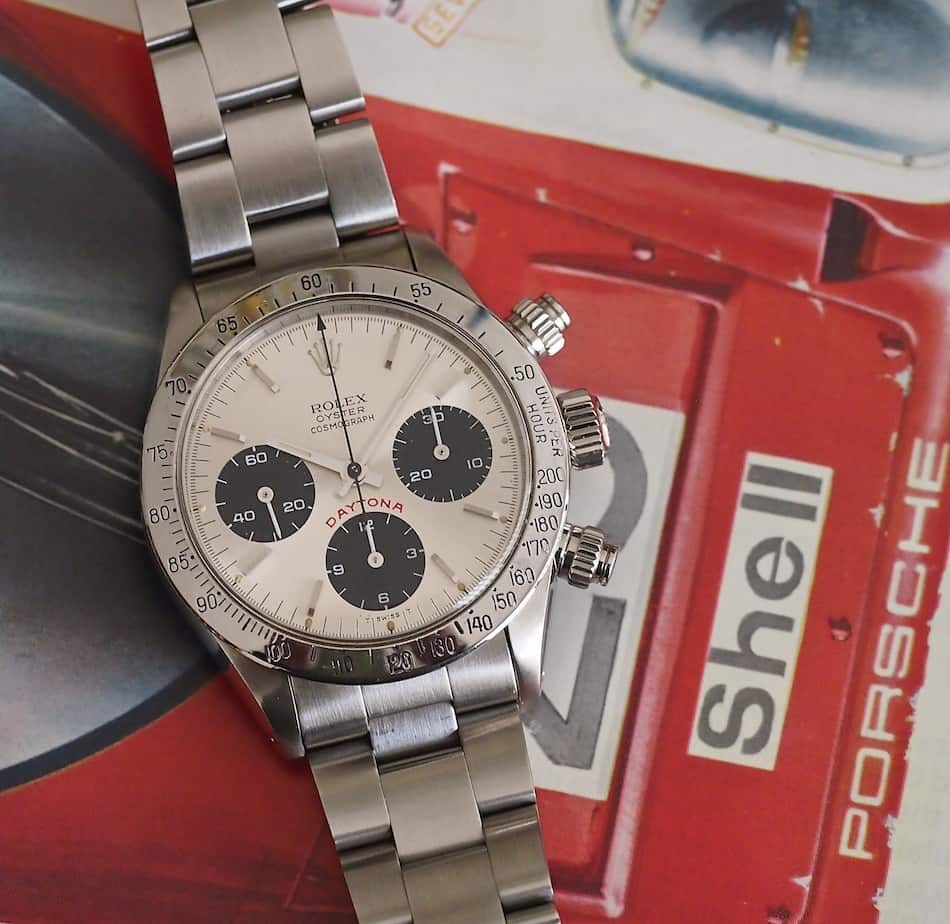
The Rolex Daytona 6265 Big Red is Precise
Like a well kept old car, the Rolex Daytona 6265 Big Red comes to life after it’s screw down crown is released and wound forward just a rotation or so. Hand-adjusted, the Valjoux 727 winds like something that’s been expertly oiled: as in, not sloppy but not at all tight. Returning the big trip-lock crown is another lesson in precision and akin to operating a bolt-action rifle. And it’s this sequence, the opening, winding and closing of the crown that leaves a fantastic first impression on the user; it’s an impression of quality and serious solidity. It’s also one that we rarely experience in full since the majority of watches from the brand are perpetual.
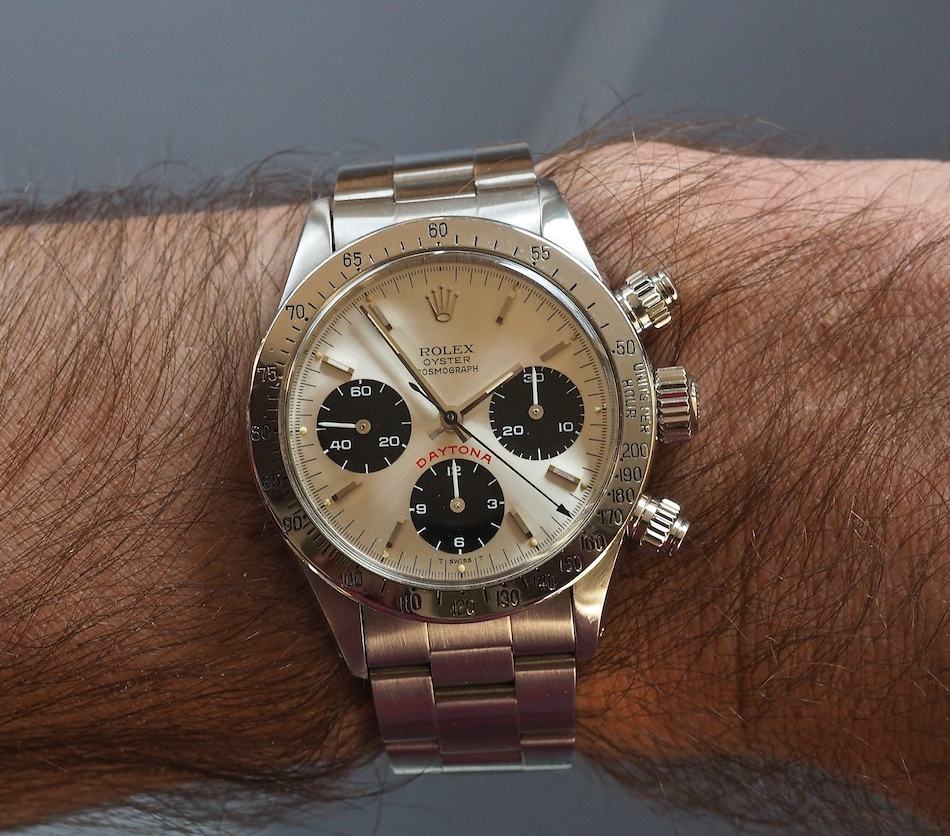
And Solid…
Similarly, there’s the clasping of the watch to one’s wrist and it’s here that I’ll call attention to the oyster bracelet. The solid linked 78350 bracelet with 571 end links is about as good as it gets. Once it has shed its stiff newness, these big-linked bracelets become as comfortable as an old pair of shoes. On the Rolex Daytona 6265 Big Red, it’s no different and it actually helps reinforce the feeling that something substantial is on your wrist. It’s a Rolex after all, made to be impermeable to all things inhospitable. But then, you look down at your wrist and conflict enters. Simply put, your brain expects a mammoth, but you realize it…the mighty Daytona is, well, rather small.
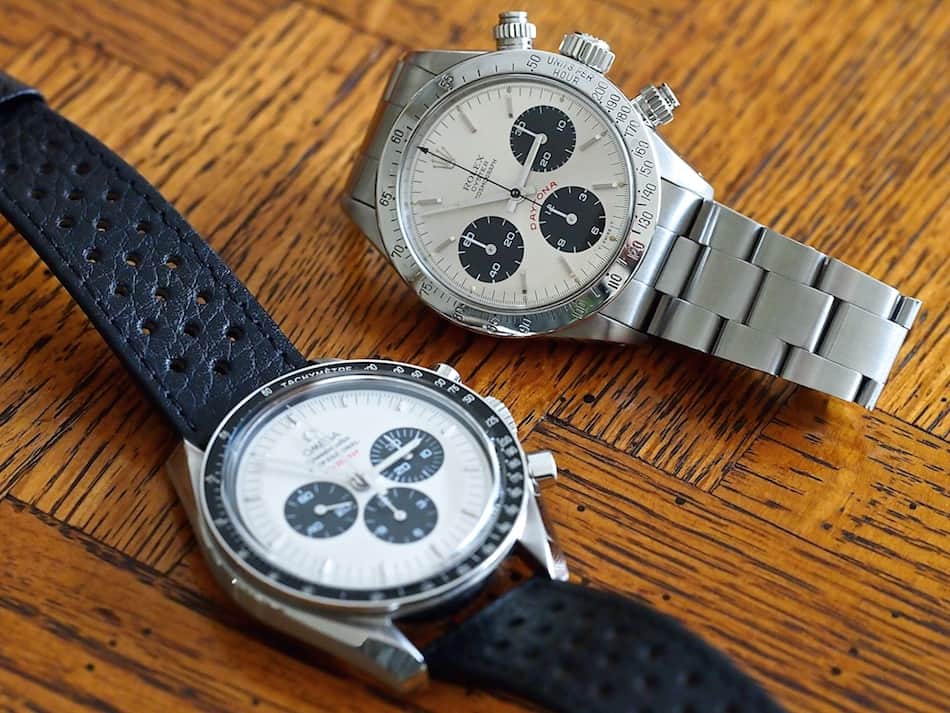
37mm – a Surprise for a Rolex
At roughly 37mm in diameter, the Rolex Daytona 6265 Big Red isn’t small per se, but it’s small in Rolex terms when compared to 40mm stalwarts like the Submariner and GMT. Bigger, though, than historic stable mates such as the 36mm Explorer 1016 and Datejust you say? True, but here’s the difference. Rolex, in what I’d call an odd move of joining its competitors of the time, chose to use 19mm as the lug width for its chronographs. Proportionally, it looks perfect and I’m happy for the choice, as it causes the Daytona to avoid any of the brutishness of the aforementioned “big” sports Rolexes and even serves to lend the watch an elegant air.
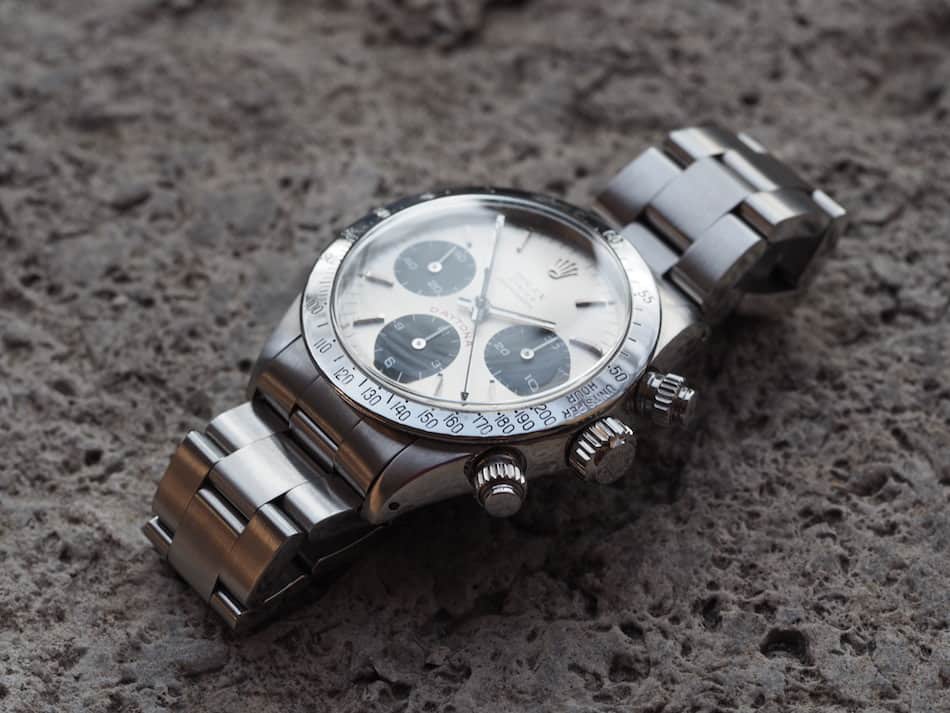
The Rolex Daytona 6265 Big Red rarely comes out
When you’re young and you hear of people owning a pre-1970 Ferrari with a massive V-12, you say to yourself that if you owned such a car, you’d take it out on a weekly basis. You’d have the means to cope with a scratch, a dent or even a blown head gasket. But this is the thinking from those who don’t own such a car. The reality is that by the time you get around to owning such a machine, one normally ends up protecting it like a treasure and that leads to lack of use. Such is the life of a manual wind Daytona. Sure, back in the day, the less desirable early Ferraris were still seen prowling the California roads, but they’ve even gone away to their climate controlled garages. And, here again, even looking at the “least desirable” (code for least valuable) Cosmograph, the Rolex Daytona 6265 Big Red, you rarely see them in the wild. In fact, I’ve only seen two hand wound Daytonas amongst the populace and they were both on separate occasions in airline lounges – in different cities. Blame it on a bracelet that any commonplace thief would notice from miles away (and who’d likely be hoping for an easily boosted Submariner on the victim’s wrist), an equally recognizable case design, or just the fact that owners are afraid of anything happening to their prized collectible – a smack into a door jamb that damages an irreplaceable part or a scrape on the subway that mars the case -, the Daytona’s sit out most of life and spend more time inside bank walls than most wealth managers. And that’s a shame…
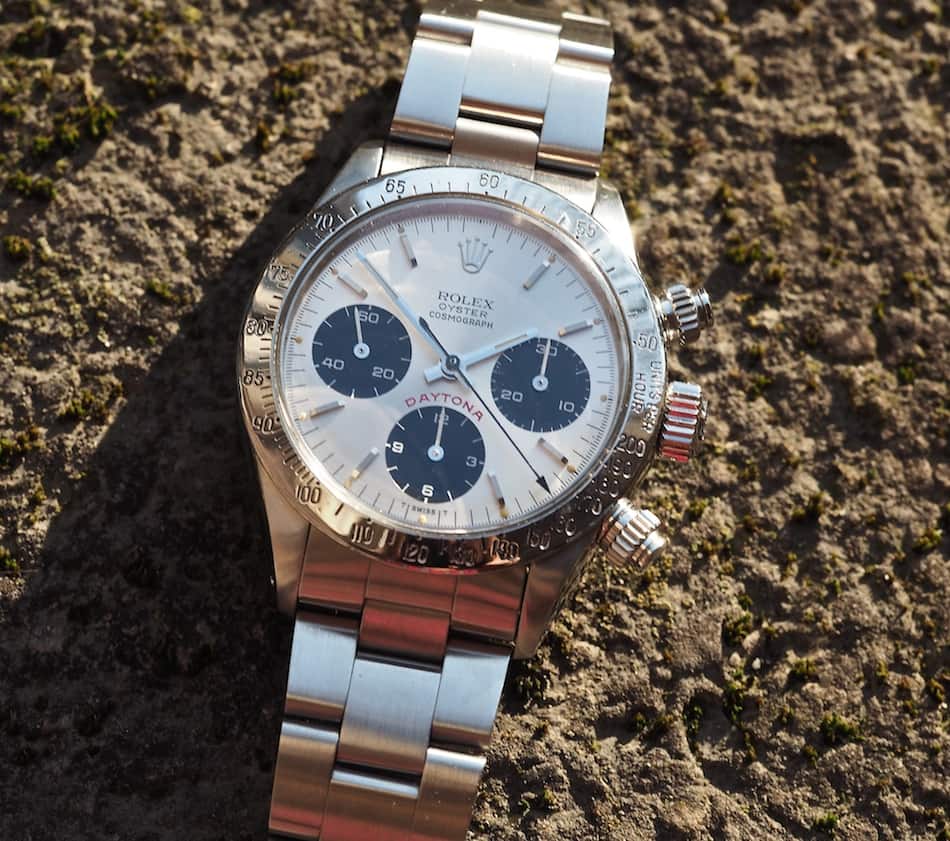
I’ve owned this Rolex Daytona 6265 Big Red for a little over two years now and, analogically, like a deadbeat Dad, I’m guilty of being very delinquent when it comes to spending time with it. The watch came from New York and was delivered to me while on a business trip in Baltimore – you can imagine the stress I felt at the hotel until I received a call that a package had arrived. Aside from the aforementioned size – yes, I’d tried one on before and yes I was still surprised by its diminutive proportions – it was something like a giant weight coming off of my shoulders when I first opened the package. Here it was, Mount Olympus and I had climbed it. The watch wasn’t a let down, but it was a little disappointing to actually achieve it. If you’re a collector of any type of watch, you’ll know what I mean – the whole thrill of the hunt thing.
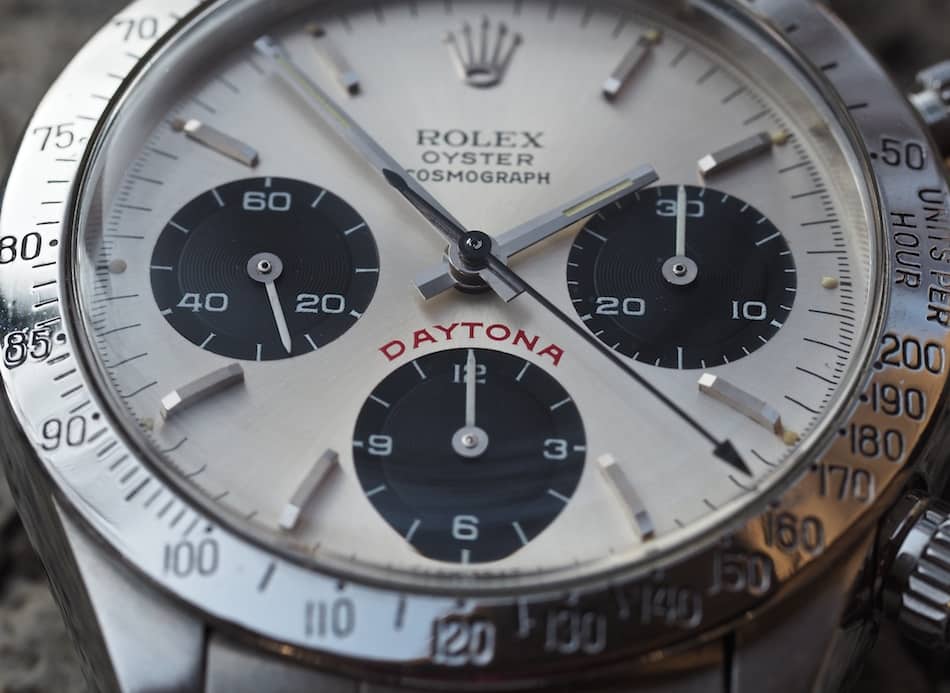
A Daytona, in Most Forms, is Restrained
And here’s the other thing about the Rolex Daytona 6265 Big Red, it’s amazingly restrained and utile. I guess this isn’t a surprise because it’s a Rolex and, yes, when the secretive brand does finally decide to let their collective hair down – I’m looking at you, 1655 Explorer II’s and Paul Newman Daytonas – people universally pan them upon introduction and then do a 180 about 25 years later and yearn for them. But I digress, the Daytona is seriously subtle and at least in this format of silvery white dial with black sub registers, it’s utterly timeless. Also, versus the bulk of the vintage chronographs I own, the Rolex has held up far better to the ravages of time. Owe it to Rolexes being made of better stuff, being more expensive from the get go and, therefore, receiving better care over time, or for going largely unused because most people favored other models from the brand. I’d like to think of it as a bit of all three, but do know that if you choose to go down this precarious path and you find a good example, you will be rewarded with one high quality timepiece.
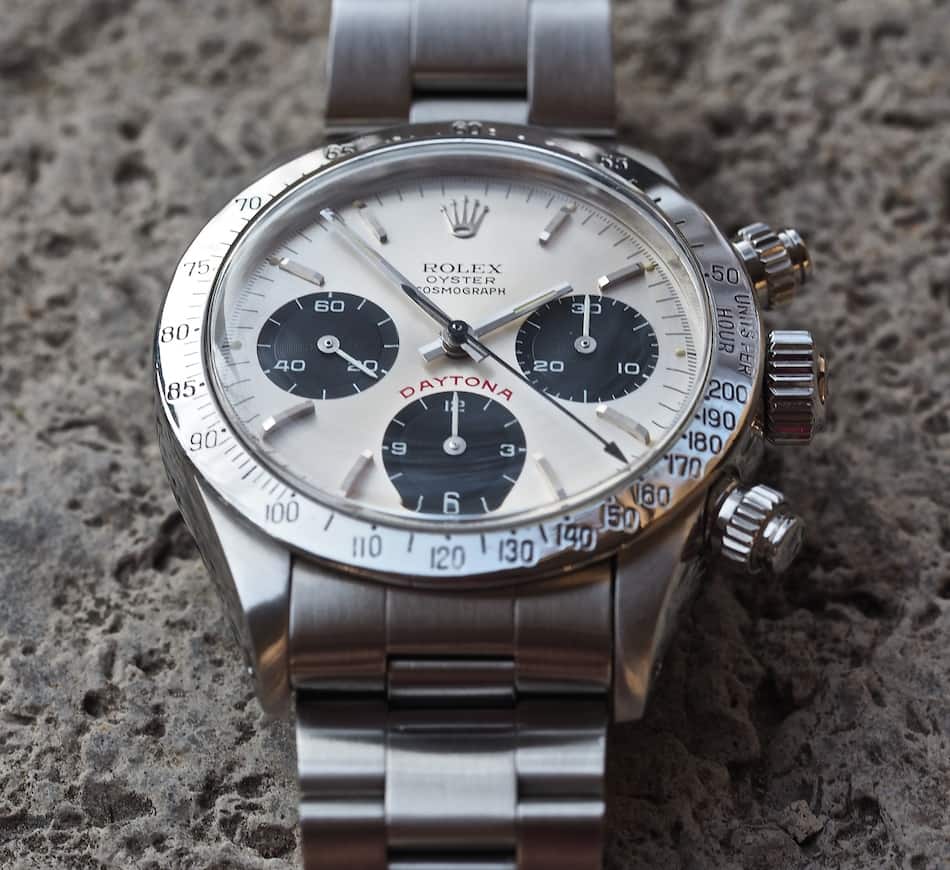
Precarious, I say? Yes, read it here and read it everywhere, the Daytona world is filled with more slime than a political lobbying convention. There’s simply too much money to be made in the Rolex market and once Daytonas became the “must have” collectible, the scoundrels entered the fray. While not at all immune to the syndrome, it’s partially why I wanted a Rolex Daytona 6265 Big Red. I figured that a newer, less desirable model would serve as less temptation for forgeries, but this was likely naivety. Still, it was that big red “Daytona” that drew me to this particular model along with the steel bezel – I just don’t love the acrylic inlays – and screw down pushers. And the silvery dial? Let’s say it was a nice aberration when compared with my addiction to reverse pandas. Yes, when I thought of a Daytona, this is the model that came to mind and for once, truly, I wasn’t drawn to the most expensive version of something. Phew!

The Pushers on the Daytona are the Stuff of Legend
Those big screw down pushers on the Rolex Daytona 6265 Big Red look fantastic. They add “armor” to the watch and give the impression that the figurative hatches can be battened down if need be. Next to the polished tachy bezel, massive crown and thick lugs, it’s a wonderful harmony of stainless steel. Even the continuation on the dial of metal, with the applied crown, the indices, and central hands and pinion on the sub register hands serves the metallic theme. I’m thankful for the minimal script and the contrasting white register hands and red Daytona writing – oh those serifs! With its sunray silver dial, the watch almost looks Teutonic.
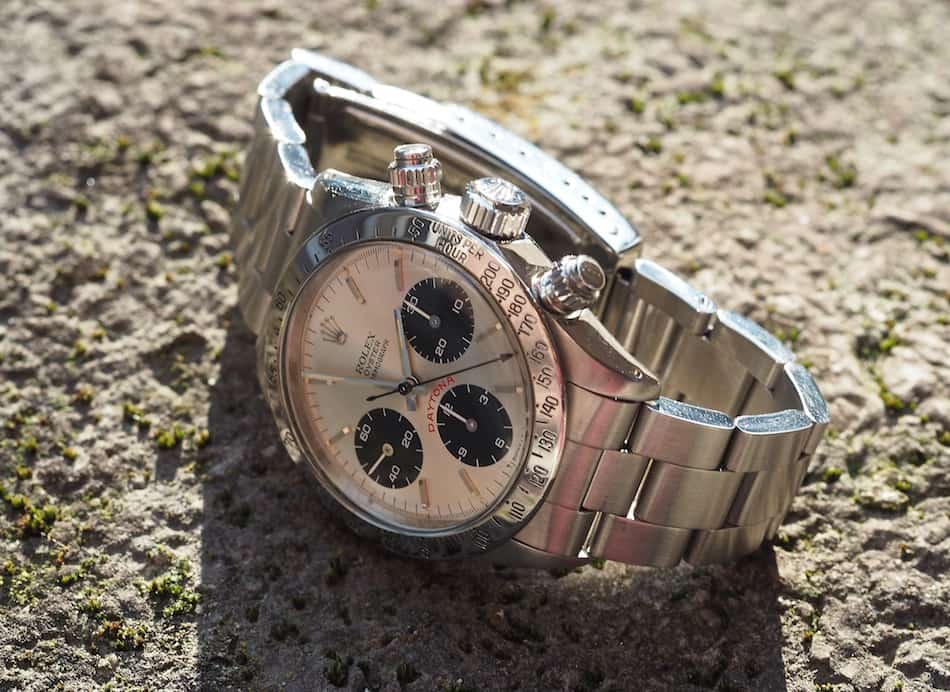
And the case on the Rolex Daytona 6265 Big Red is sublime. Yes, I’ve heard complaints from some that Rolex cases are boring and lack character. Maybe so, but what they lack in detail, they make up for in surface finishing and their ability to combine with what is arguably the greatest watch bracelet ever created. Regarding the last detail, I do see Daytonas on straps from time to time or, unfortunately, a Jubilee bracelet and it pains me. I’ve gotten used to early pump pusher Daytonas on straps from time to time but I still declare that when a bracelet is this good, and providing that you own it, why wear anything else? And wearing? Let’s just say that 37mm is a fine size for a watch and with such massive pushers, it punches above its weight.
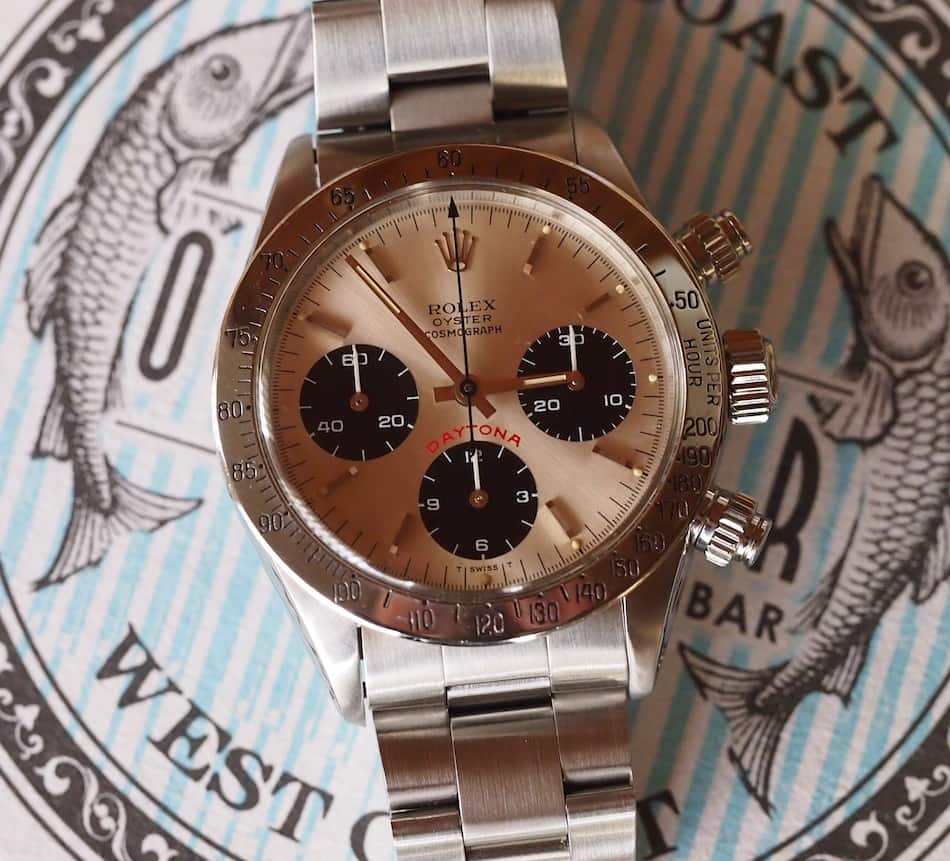
Is a Vintage Daytona Worthwhile?
But is the Rolex Daytona 6265 Big Red or any vintage Daytona, for that matter, worthwhile? Based on rarity alone, I’d say no because these watches aren’t rare. In fact, go try and source most of the watches we’ve featured on #TBT and you’ll drive yourself mad versus finding a decent Daytona. But as we’ve said, rarity and value are two different things altogether. The reality is that many more people want a Rolex versus something eccentric such as an Enicar. That doesn’t make one better than the other – it’s simply current fact. Coming back to my question, I can see how and why people of serious means develop an addiction to vintage Daytonas. There’s lore about them, they have nicknames and they make headlines at auction. And, most importantly, unlike 90%+ of the vintage watches out there not named Rolex, a vintage Daytona feels solid enough to do daily duty. And then there are the variants – all were seemingly well thought out and they provide loads of directions for collectors to follow.

Compared to a Heuer Autavia
And how does the Rolex Daytona 6265 Big Red compare head-on to other, similar chronographs. Well, let’s spend a moment on this. When I picked up a 3rd execution Heuer Autavia 2446 a couple years back, I wrote a #TBT on it explaining how doggone similar it is to the Daytona. With its Valjoux 72 and nearly identical Singer dial, the differences in the two watches come down to case design and the small details. I own what I think is a very nicely preserved Heuer and it is a quality watch – it’s by no mean rickety like some vintage watches I own – but there is just something about the Rolex that makes it feel as though its been crafted from one solid block of metal.
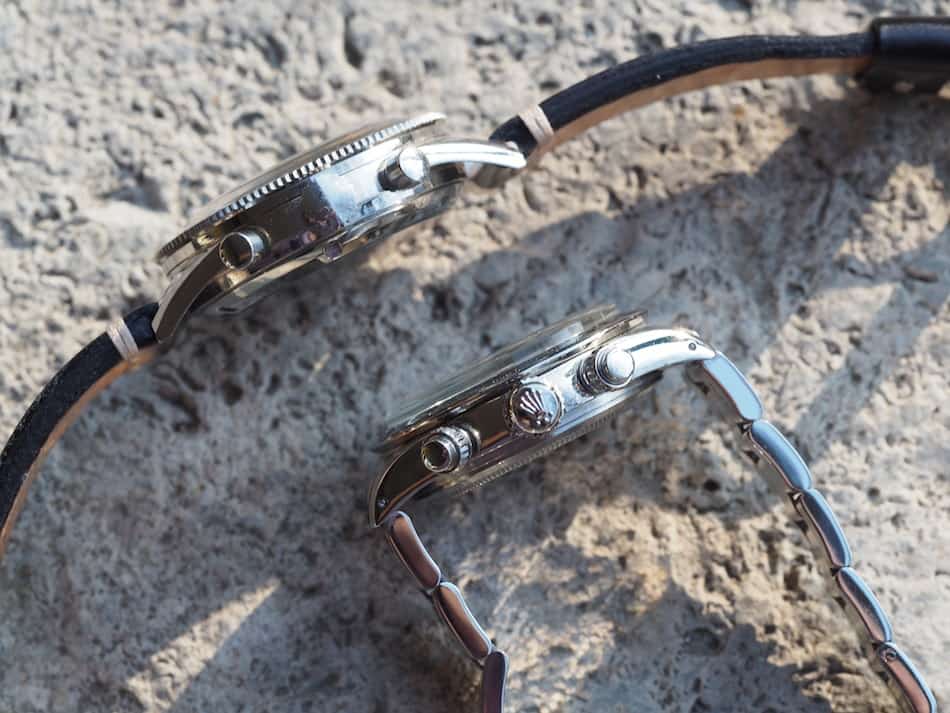
Again, the Heuer is a beautifully designed watch – the case is certainly more detailed – but the Rolex just feels more expensive. Incidentally, the Autavia was worth about 20% of the Daytona about two years ago, but would now give it a fair fight in an auction.
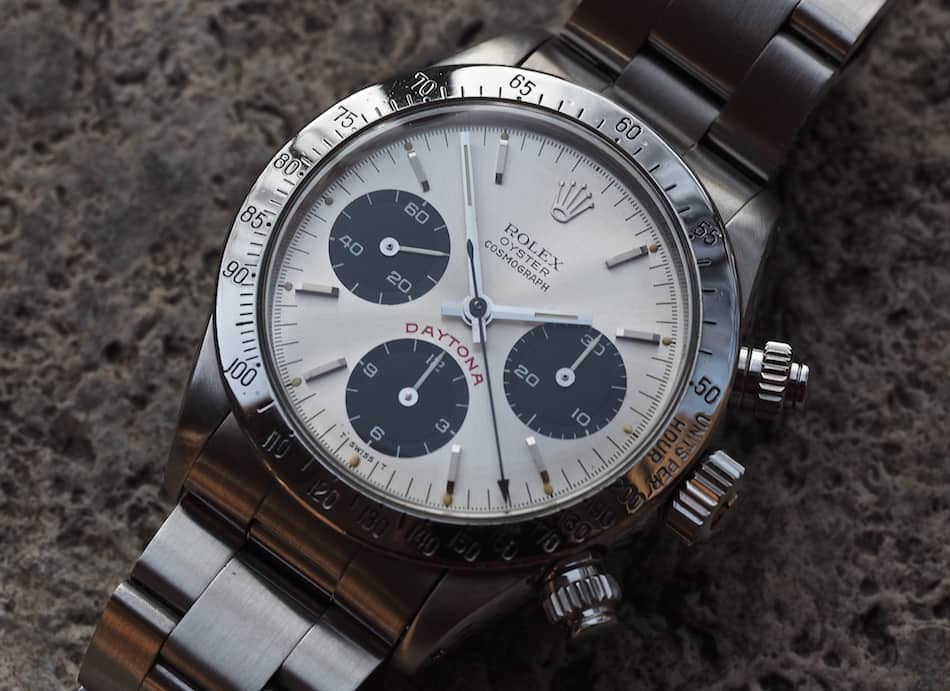
So, yes, the Daytona is worthwhile if you have the means, value quality over design expression, and are ok to wear your watch sparingly. I’d also wager that if you are one of those people who are considering spending $17K+ on a secondhand new Daytona, wait another year and spend double on something like the Rolex Daytona 6265 Big Red. The curmudgeon in me contends that stainless Daytonas weren’t meant to have polished center links anyhow and there’s certainly no need for crown guards when big pushers are standing guard just millimeters away from the winding crown. Contrastingly, if quantity is your thing in vintage watches and pulling together a lovely stable of 4-5 great watches for the price of a Daytona is your interest, I’d hardly fault you. Still, though, there’s just something about a vintage Daytona.

Beware of Sharks in the Daytona Market
The Rolex Daytona 6265 Big Red commands a $30,000+ price tag for a respectable watch. They’ve climbed in value steadily over the years and left the sub $30K threshold several years back. A watch with a price like this would lead you to believe that they’re rare and that’s not exactly true. In fact, I always marvel at how many manual wind Daytonas – of any breed including the Newmans – are available at any given time. Sure, most have problems, but the number of good ones outweighs the general market availability of so many other pieces combined! So, here we are talking about rarity and value diverging. With Daytonas, like any other vintage watch, originality is key. Dials are by far the most valuable detail and there are all types of sites out there that explain age ranges and the appropriate dials. Related to dials, the small, applied tritium “lume pips” are a value demerit if any are missing. Original bezels and screw down pushers are also extremely important. Parts do show up here and there, but as you might imagine, they are highly expensive as they help contribute to highly valuable watches. In the end, you could consider ignoring the adage “buy the seller” on about any other watch before doing so with a Daytona – it’s that risky and that expensive a proposition.
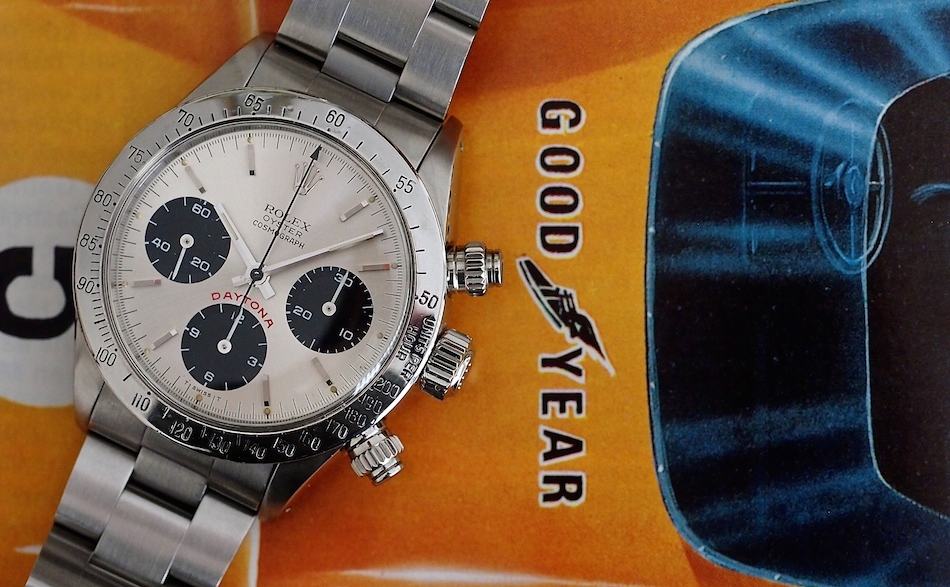
Conclusion
Manufactured until roughly 1987, the Rolex Daytona 6265 Big Red and its acrylic bezel 6263 siblings were the last of a breed that started in 1963. As stated, finding one today isn’t terribly difficult but finding a good one is becoming tougher. Like so many good things, these Big Reds weren’t very popular during production as the rest of the watch world – save the Speedmaster Professional – had long since moved its chronograph lines to automatic movements. Like the 1016 Explorer from the same era, these watches were odd anachronistic timepieces that had somehow survived the introduction of sapphire crystals and fancier dials. To me, that makes both a bit loveable, if not full of character. I hope you enjoyed this look at a vintage Daytona. I’ll enjoy returning to it as well to look at the photos because, sadly, the Big Red has already returned to its bank box – silently waiting to come out again.






















